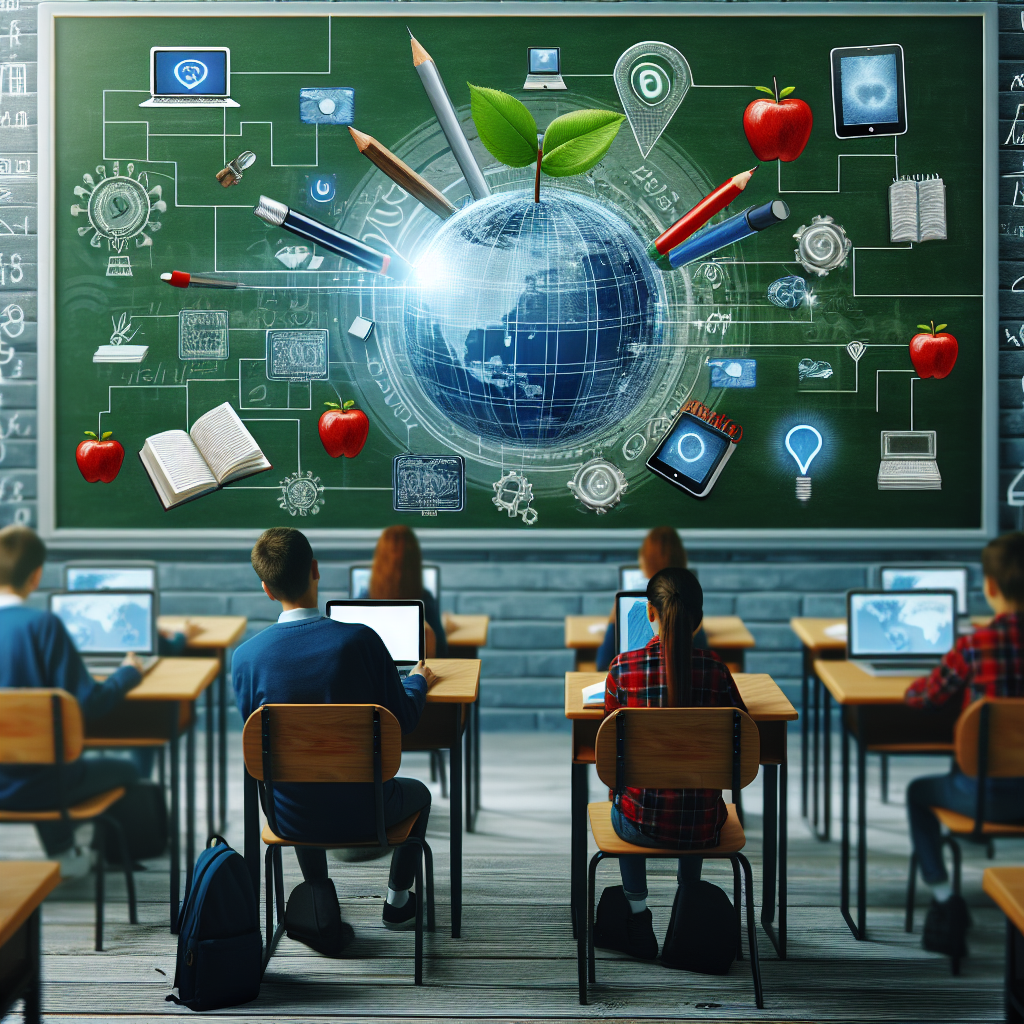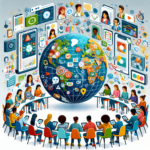Table of Contents
Introduction

Digitalisasi Kelas: Menerapkan Teknologi untuk Meningkatkan Kualitas Pendidikan
In today’s rapidly evolving world, technology has become an integral part of our daily lives. It has transformed various sectors, including education. In Indonesia, the implementation of technology in classrooms, known as digitalisasi kelas, has gained significant attention. This article aims to explore the concept of digitalisasi kelas, its benefits, challenges, and the potential it holds for improving the quality of education in Indonesia.
The Concept of Digitalisasi Kelas
Digitalisasi kelas refers to the integration of technology into the teaching and learning process. It involves the use of digital tools, such as computers, tablets, interactive whiteboards, and educational software, to enhance the educational experience. The goal is to create a more engaging and interactive learning environment that caters to the needs and preferences of today’s tech-savvy students.
The Benefits of Digitalisasi Kelas
Digitalisasi kelas offers numerous benefits that can significantly improve the quality of education in Indonesia. Firstly, it enhances student engagement. Traditional teaching methods often fail to capture the attention of students, leading to disinterest and lack of motivation. By incorporating technology, teachers can create interactive lessons that stimulate students’ curiosity and actively involve them in the learning process.
Secondly, digitalisasi kelas promotes personalized learning. Every student has unique learning styles and paces. Technology allows teachers to tailor their lessons to individual students, providing personalized content and pacing. This approach ensures that students grasp concepts effectively and progress at their own speed, leading to better learning outcomes.
Furthermore, digitalisasi kelas facilitates access to a vast amount of educational resources. With the internet, students can explore a wide range of materials, including e-books, online courses, and educational videos. This access to diverse resources enriches their learning experience and enables them to explore subjects beyond the limitations of traditional textbooks.
The Challenges of Digitalisasi Kelas
While digitalisasi kelas offers immense potential, it also comes with its fair share of challenges. One of the primary concerns is the digital divide. Not all students have equal access to technology and the internet, especially in remote areas or low-income communities. This disparity can create an educational gap, where some students benefit from digitalisasi kelas while others are left behind. Addressing this issue requires government initiatives to ensure equal access to technology and internet connectivity across the country.
Another challenge is the resistance to change. Some teachers may be hesitant to adopt technology in their classrooms due to a lack of familiarity or fear of being replaced. Overcoming this resistance requires comprehensive training programs and support for teachers to develop their digital skills and understand the benefits of digitalisasi kelas. Additionally, creating a positive and supportive school culture that encourages innovation and experimentation can help alleviate teachers’ concerns.
The Potential of Digitalisasi Kelas in Indonesia
Digitalisasi kelas has the potential to revolutionize education in Indonesia. By embracing technology, the country can overcome the limitations of traditional teaching methods and provide a more inclusive and effective learning experience for all students. The government plays a crucial role in driving this transformation by investing in infrastructure, providing training programs for teachers, and formulating policies that promote the integration of technology in classrooms.
One area where digitalisasi kelas can have a significant impact is in bridging the educational gap between urban and rural areas. Remote and underserved communities often face limited access to quality education. By leveraging technology, students in these areas can gain access to the same educational resources and opportunities as their urban counterparts. This can help reduce inequality and empower students from all backgrounds to reach their full potential.
Furthermore, digitalisasi kelas can enhance the quality of teaching. Technology provides teachers with tools for effective lesson planning, content delivery, and assessment. It enables them to track students’ progress, identify areas of improvement, and provide timely feedback. This data-driven approach to teaching can lead to more targeted interventions and personalized support for students, ultimately improving their learning outcomes.
Summary
Digitalisasi kelas holds immense potential for improving the quality of education in Indonesia. By integrating technology into classrooms, students can benefit from increased engagement, personalized learning, and access to a wide range of educational resources. However, challenges such as the digital divide and resistance to change need to be addressed to ensure equal opportunities for all students. With the government’s support and investment in infrastructure and teacher training, digitalisasi kelas can bridge the educational gap and empower students across the country. Embracing technology in education is not just a trend but a necessity to prepare students for the digital age and equip them with the skills required for future success.


